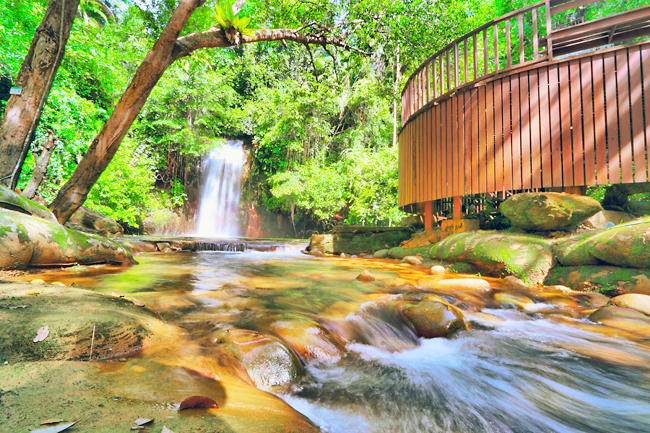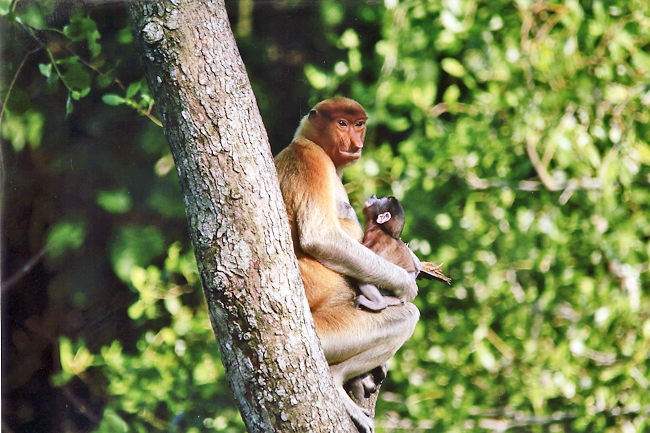Youth voices rang clear and strong at COP 16, the United Nations (UN) Biodiversity Conference that emphasised collaborative action like never before.
Against this backdrop, the ASEAN Centre for Biodiversity (ACB) and Hanns Seidel Stiftung (HSS), a German foundation active across Southeast Asia, cemented a pact that underscores a commitment to youth empowerment across the region.
The newly signed memorandum of understanding sets the stage for enhanced youth engagement in biodiversity governance – a powerful step forward for the region’s future.
The announcement came during the side event Partner with Youth to Achieve the Global Biodiversity Framework, co-hosted by ACB, HSS, and the Global Youth Biodiversity Network (GYBN) Southeast Asia.
BIODIVERSE AND CONQUER
In 2024, Colombia made history as it hosted the COP 16, the decision-making body of the Convention on Biological Diversity (CBD). Held in Cali from October 21 to November 1, the landmark event brought together global leaders, scientists, non-governmental organisations, and activists themed ‘Peace with Nature’ urging a shift in humanity’s relationship with the environment.
Originating from the 1992 Earth Summit in Rio, the CBD aimed to conserve biodiversity, ensure its sustainable use, and share the benefits of genetic resources equitably. COP 16 carried this mission forward amid an escalating biodiversity crisis.
Cali’s rich ecosystems and cultural vibrancy made it an ideal venue, symbolising the interconnectedness of nature and society.
Yet, the region faced challenges such as deforestation and habitat loss.
The conference called for robust frameworks to curb these issues, emphasising sustainable practices over extractive economic models.
The ‘Peace with Nature’ message resonated as a call to action, blending environmental justice with socio-economic resilience. COP 16 aimed to inspire commitments that would ripple into communities, urging collective efforts towards a future where humanity and nature thrive in harmony.


BRIDGING GENERATIONS
According to a press statement from the ASEAN Centre for Biodiversity, the COP 16 event was more than just a meeting as it was a bridge connecting youthful energy with seasoned expertise.
With international organisations, development partners, private sector players, and passionate advocates all present, the space buzzed with collaborative potential.
ACB executive director Dr Theresa Mundita S Lim opened the session with a compelling reminder.
“The People’s COP is about recognising that sustainability thrives on collective action,” she stated, highlighting that young people’s involvement is a vital force in conservation, not just regionally but globally.
This set the tone for the day’s discussions, where youthful perspectives were positioned not as secondary but as essential to biodiversity solutions. The ASEAN Youth Biodiversity Programme (AYBP) stood out as the flagship of ACB’s youth-centred initiatives.
Launched in 2018 under the European Union (EU)-backed Biodiversity Conservation and Management of Protected Areas in ASEAN (BCAMP), the AYBP has made significant inroads in empowering young environmentalists.
Over the years, it has evolved into a solid framework nurturing young champions who not only advocate but actively shape biodiversity policies and actions.
Sub-programmes within AYBP have blossomed into robust platforms.
The Young ASEAN Storytellers, for instance, comprises 20 dynamic individuals from across ASEAN member countries who bring stories of heritage and conservation to life.
Meanwhile, the Young Biodiversity Leaders scheme dives deeper, offering rigorous training and mentorship that grooms future policymakers and community leaders committed to environmental causes.
Mika Tan, representing GYBN and a former AYBP coordinator, spoke passionately about the programme’s impact. She highlighted how youth engagement is moving beyond token participation to playing an integral role in addressing biodiversity loss head-on.
Echoing this sentiment, Julia Berger of HSS shared inspiring anecdotes of youth-driven projects that have already reshaped local initiatives. “GYBN connects informal youth networks across all ASEAN member countries – a feat that would be impossible without their grassroots reach.
“Meanwhile, the ACB, with its direct links to ASEAN governments, bridges the local, national, and regional spheres seamlessly. This collaboration is a formula for success,” said Berger, underlining that the synergy between organisations has exceeded expectations.
Adding to the momentum, Nadia Putri Rachma Persada, a Young Biodiversity Leader, presented findings from a recent mapping study.
This collaborative project between ACB and GYBN-Southeast Asia, supported by the KfW Development Bank and HSS, documented the contributions of young advocates and outlined strategies for deeper, more impactful youth involvement.
These initiatives align with Target 22 of the Kunming-Montreal Global Biodiversity Framework, which calls for full, inclusive youth representation in decision-making and access to environmental information.
The target sets out an ambitious yet vital path toward the 2050 vision of harmonious living with nature – an ambition that becomes increasingly attainable with youth at the helm.
The collaboration between ACB and HSS is more than a formality; it is a demonstration to the power of nurturing a new generation of eco-champions.
With training, mentorship, and strategic partnerships, these young leaders are poised not just to join the conversation but to steer it – propelling ASEAN and the world closer to a sustainable, inclusive future. – Features Desk




